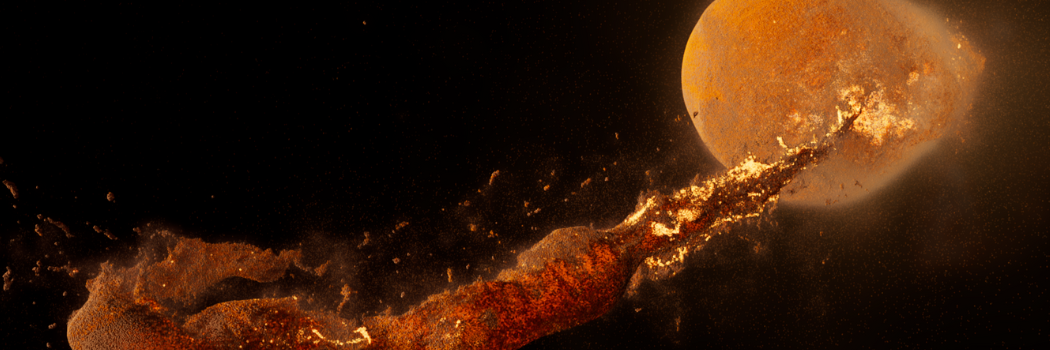Supercomputer simulations reveal new possibilities for the Moon's origin

Our pioneering scientists from the Institute for Computational Cosmology used supercomputer simulations to reveal an alternate explanation for the Moon’s origin, as a satellite placed immediately into orbit following a giant impact between Earth and a Mars-sized body.
High-end simulations
The researchers created the highest resolution simulations yet produced to study the Moon’s origin 4.5 billion years ago.
They used the SWIFT open-source simulation code to run high-resolution simulations of hundreds of collisions at different impact angles, speeds, planet spins, masses and more.
The simulations were carried out on the DiRAC Memory Intensive service (“COSMA”), hosted by Durham University on behalf of the DiRAC High-Performance Computing facility.
This extra computational power revealed that lower-resolution simulations can miss out on important aspects of large-scale collisions, allowing researchers to see qualitatively new behaviours emerge in a way that wasn’t possible in previous studies.
A range of new possibilities
The immediate-satellite scenario opens up new possibilities for the initial lunar orbit and internal properties.
This could help to explain unsolved mysteries like the Moon’s tilted orbit away from Earth’s equator; or could produce an early Moon that is not fully molten, which some researchers propose could be a better match for its thin crust.
The researchers also discovered that this directly formed satellite might help to alleviate the highly debated problem of the Moon’s Earth-like isotopic composition, with larger amounts of proto-Earth material in the outer layers of the Moon.
Find out more
- Learn more about the work of Jacob Kegerreis, Sergio Ruiz-Bonilla, Dr Vincent Eke, Professor Richard Massey and Thomas Sandnes.
- Read the full paper published in ApJ Letters.
- Check out our Institute for Computational Cosmology.
- Interested in studying at Durham? Explore our undergraduate and postgraduate courses.
About our Department of Physics
Our Department of Physics is a thriving centre for research and education. Ranked 4th in the UK by The Guardian University Guide 2022, we are proud to deliver a teaching and learning experience for students which closely aligns with the research-intensive values and practices of the University.
Feeling inspired? Visit our Physics webpages to learn more about our postgraduate and undergraduate programmes.


/prod01/prodbucket01/media/durham-university/departments-/physics/teaching-labs/VT2A9034-1998X733.jpeg)
